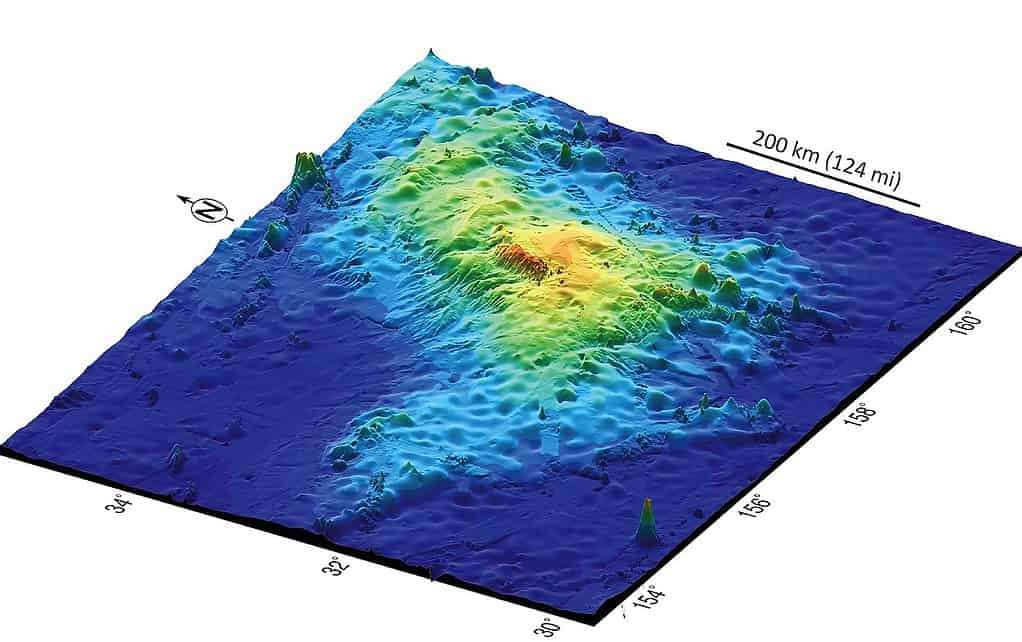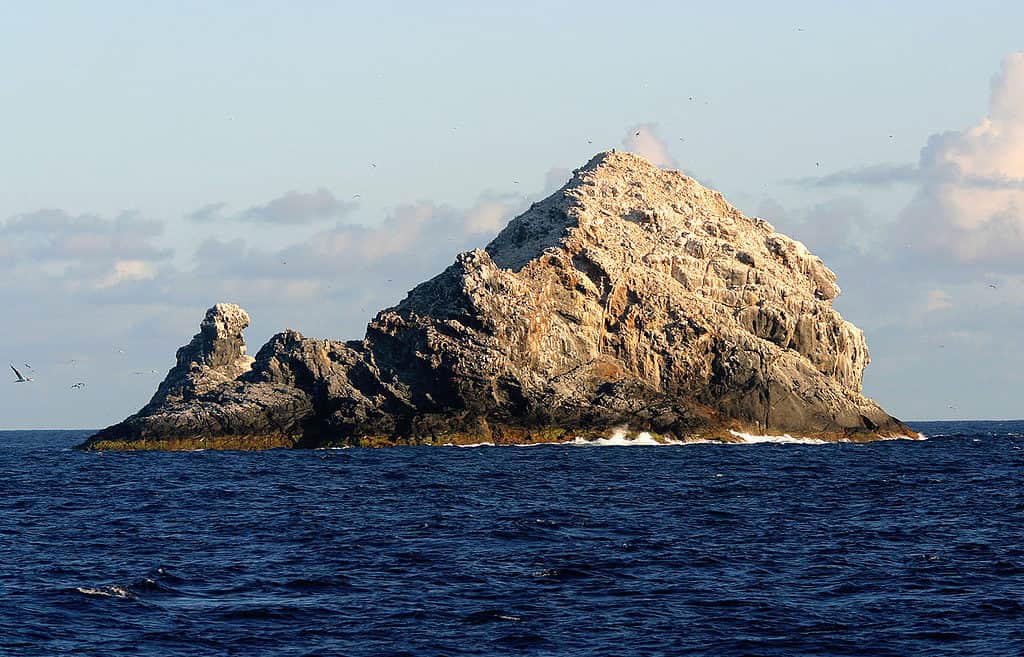Volcanoes are openings in the earth, specifically called vents, that release lava, small rocks called tephra, or steam onto the earth’s surface over a course of hours, days, or even weeks.
On the surface of the earth, a volcano appears as a mountain or a massive mound of soil with a vent on top, known as the cone. Ashes, dust, lava, and other materials which have been piling up for many years pour out of the vent, giving it this shape. There are thousands of volcanoes on Earth, each one mostly different from the others, many of which are no longer active.
Although there are volcanoes scattered on the surface of the earth, there are also volcanoes that can be found underwater. Keep reading to discover the largest underwater volcanoes on Earth and whether or not they are ready to blow.
What Are Underwater Volcanoes?
Underwater volcanoes are also called submarine volcanoes. Submarine or underwater volcanoes are fissures mostly buried under the Earth’s waters from which magma can erupt. Essentially, underwater volcanoes work almost entirely the same way as volcanoes found on the surface.
Most often, underwater volcanoes are usually found in the depths of seas and oceans, mostly along the Pacific Ocean. Some of them can also be found in shallow waters.
How Are Underwater Volcanoes Formed?
To understand how these underwater volcanoes are formed, it is necessary to first understand how to land volcanoes generally are formed. The mantle, the core, and the outer crust are the three layers that make up the Earth. The main component in the creation of volcanoes is the mantle, which is composed of molten rock and gas known as magma. Within the earth’s crusts, there are weak areas, openings, or cracks that are called fault lines. A volcanic eruption is very likely to take place when the mantle is under a lot of pressure, especially along fault lines. During this eruption process, the molten material found within the mantle layer of the earth’s surface finds its way out of these cracks as lava.
There is not much of a difference between the formation of underwater volcanoes and the formation of land ones. In other words, instead of the mantle layer spilling out magma through the cracks on the earth’s surface, it happens underwater instead, forming submarine volcanoes over the years. Additionally, tectonic plate collisions or separations can result in the formation of volcanoes.
The Largest Underwater Volcanoes
Submarine volcanoes appear to be more uncommon than terrestrial volcanoes. However, there are more underwater volcanoes than there are terrestrial ones, and these underwater volcanoes are the most active on the globe. But the number of underwater volcanoes in the world remains unknown, and experts believe there are several thousand scattered across the world’s oceans.
Below, we list two of the largest underwater volcanoes on record.
1. Tamu Massif

©IODP / public domain – License
Currently, the largest underwater volcano on record is the Tamu Massif. This volcano is located in the northwest of the Pacific Ocean about 1,600 km (990 miles) east of Japan. Tamu Massif covers an area of 553,000 square kilometers (214,000 square miles) and sits at around 6,500 feet (1,980 m) below the ocean. This underwater volcano also has an impressive height of around 14,620 feet (4,460 meters). Based on research conducted, it is believed that the Tamu Massif formed around 145 million years ago, during the Late Jurassic to Early Cretaceous period. The first part of the volcano’s name is a combination of the initials of Texas A&M University where one of the lead scientists studying the volcano, William Sager, worked as a geology professor. The latter part of the volcano’s name was taken from French, where massif means massive, and in geology, it means a large section of the earth’s crust.
The last eruption time of the Tamu Massif remains largely unknown. However, experts believe that the underwater volcano might never erupt again. The Moho line, which marks the transition between the Earth’s crust and mantle, may be found more than 30 kilometers (19 miles) beneath the Tamu Massif.
2. Gardner Pinnacles (Pūhāhonu)

The Garner Pinnacles is one of the largest underwater volcanoes in the world.
©Andy Collins, NOAA Northwestern Hawaiian Islands Coral Reef Ecosystem Reserve / public domain – License
Another one of the world’s largest underwater volcanoes is the Gardner Pinnacles (Hawaiian: Pūhāhonu). However, unlike the Tamu Massif, a part of this volcano can be seen from the surface of the ocean. The volcano is located in Hawaii and stands around 170 feet (52 meters) above sea level while the base is believed to be a little over 14,000 feet from the seafloor. The majority of Pūhāhonu, which was first found as a volcano in 1820, is located at great depths, and its total height is equal to five Eiffel Towers. The volcano’s crust has sunk several hundred miles since it first formed millions of years ago as a result of its enormity. The volcano is mostly submerged with just a little portion showing, giving rise to its name, Pūhāhonu, which means “turtle rising for breath” in Hawaiian.
Like the Tamu Massif, the last eruption of the Pūhāhonu is unknown. However, when it was still active, Pūhāhonu’s magma has been tested to have been around 3,100° Fahrenheit (1,700° Celsius) making it the hottest recorded magma ever.
Whether or not these underwater volcanoes would ever erupt again, it should be noted that underwater volcanic eruptions do not have the same effect as terrestrial volcanic eruptions. Depending on how close it is to the water’s surface, an underwater volcanic eruption might have different effects. The weight of the water above functions as a pressure cap if the eruption occurs at extreme depths. However, if the water is shallow, the eruption could heat the water and cause steam, killing marine life in the process. Also, it could cause the ashes to rise into the atmosphere, causing further health damage to other animals and even humans.
Where Can the Two Largest Underwater Volcanoes on Earth Be Located on a Map?
Tamu Massif
The largest underwater volcano on record is the Tamu Massif, located in the northwest of the Pacific Ocean about 1,600 km (990 miles) east of Japan. The cursor can be moved on the map below to see the underwater volcano’s proximity to Japan.
Gardner Pinnacles
Gardner Pinnacles can be seen from the surface of the ocean. The volcano is located in Hawaii and stands around 170 feet (52 meters) above sea level while the base is believed to be a little over 14,000 feet from the seafloor.
The photo featured at the top of this post is © iStock.com/prill
Sources
- Erik Klemetti, Available here: https://www.discovermagazine.com/planet-earth/the-worlds-largest-volcano-is-hidden-beneath-the-ocean
- Stephen Chen, Available here: https://www.google.com/amp/s/amp.scmp.com/tech/science-research/article/1929458/tamu-massif-even-more-massive-worlds-largest-volcano-almost
- Tas Walker, Available here: https://creation.com/tamu-massif
Thank you for reading! Have some feedback for us? Contact the AZ Animals editorial team.






